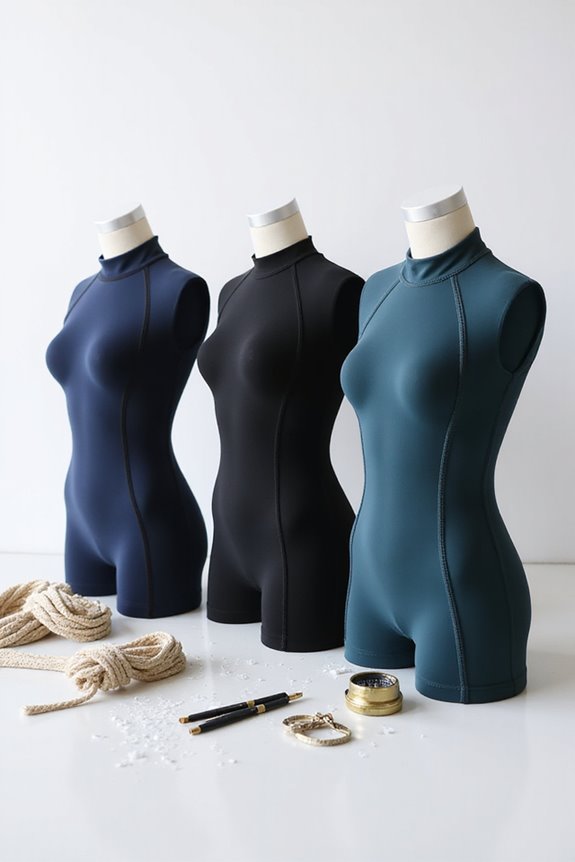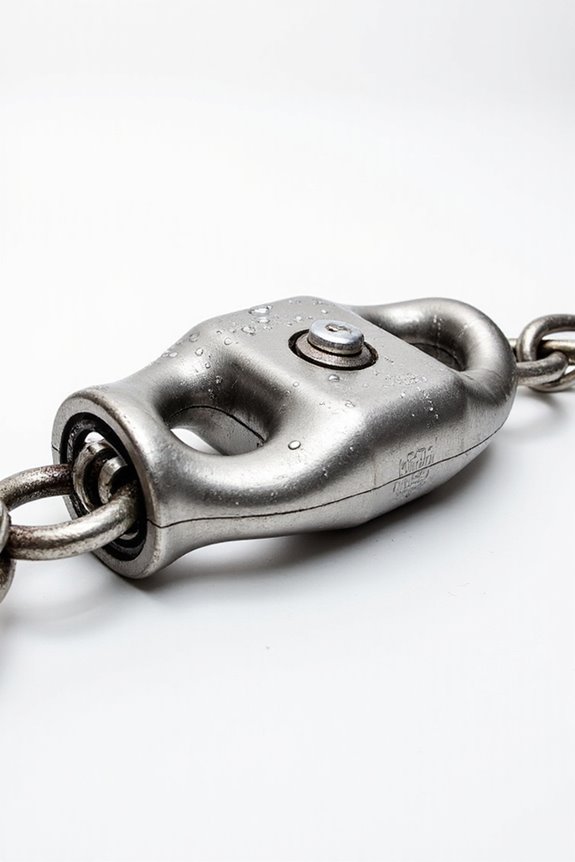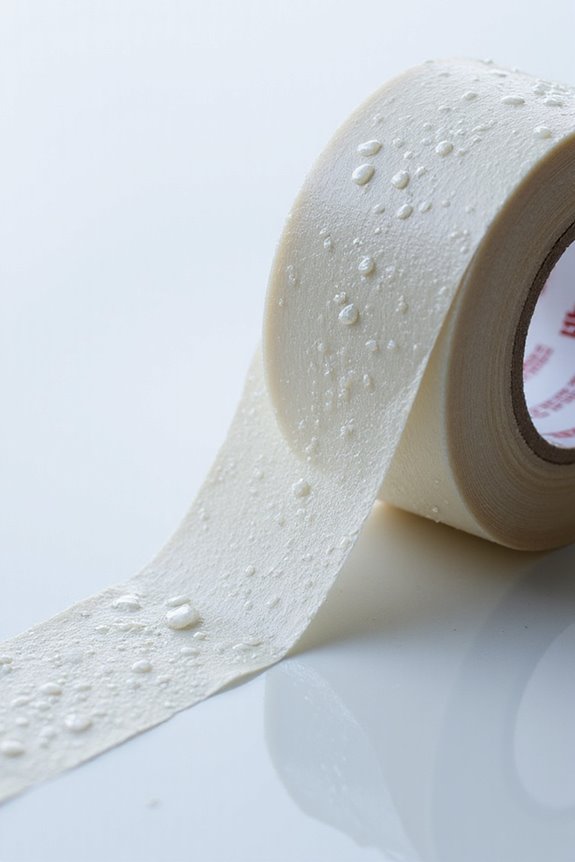Choosing wetsuit thickness for boating depends mainly on water temperature and how long you plan to stay out there. In warm waters around 22°C to 27°C, a 2-3mm suit works great, keeping you comfy without overheating. Cooler outings below 17°C call for thicker 5mm suits to block the chill, especially with wind and waves. Don’t forget gloves and hats—they’re like the secret sauce for warmth. Want to know how to pick the perfect suit for your next trip? Keep going!
Key Takeaways
- Choose 2-3mm wetsuits for warm water boating between 22°C and 27°C for comfort and mobility.
- Opt for 5mm or thicker wetsuits when boating in water below 17°C to ensure adequate insulation.
- A 3/2mm full wetsuit suits moderate temperatures, balancing warmth with ease of movement.
- Consider environmental factors like wind chill and activity length when selecting wetsuit thickness.
- Use accessories like thermal layers, gloves, and hats for added warmth in cold water boating conditions.
Understanding Water Temperature and Wetsuit Thickness
While wetsuit thickness might seem like just a number, it actually plays a huge role in keeping us comfortable and safe in the water. Understanding how water temperature guides our wetsuit choice is key. Different wetsuit materials provide varying thermal insulation, trapping warm water close to our skin. For example, thinner suits like 2mm to 3mm work well for water between 22°C and 27°C, offering flexibility with enough warmth. When temperatures dip below 17°C, thicker suits around 5mm or more are essential to keep us cozy. Ever wondered why we don’t just pick the thickest suit every time? It’s about balancing warmth and mobility. Knowing these basics helps us pick the right protection, so we’re comfortable and part of the boating crew, no matter the water’s chill.
Selecting the Right Wetsuit for Different Boating Environments
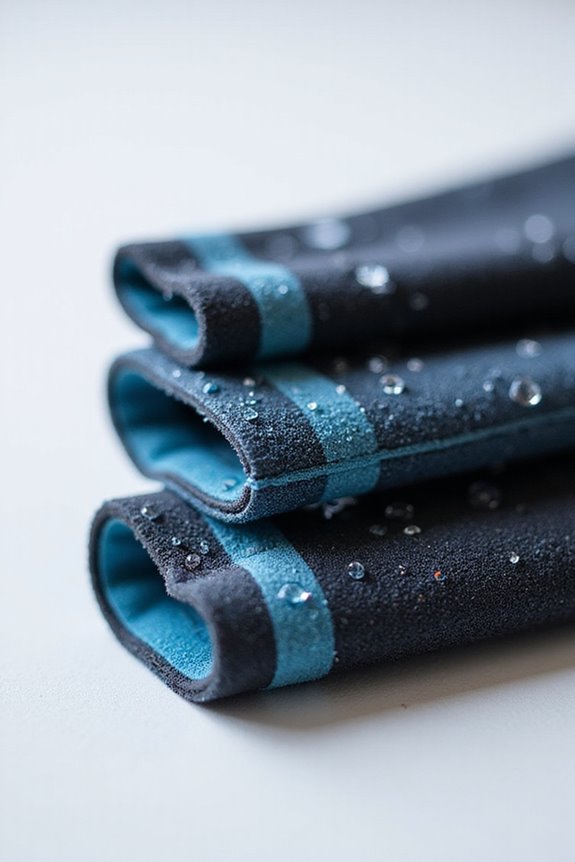
Choosing the right wetsuit for boating depends a lot on where and when you’re planning to hit the water. For warm tropical spots, we might skip the wetsuit or opt for shorty styles—light and flexible to keep us comfy without overheating. In moderate temps, a 3/2 mm full suit balances warmth and mobility perfectly, vital for paddling or active boating. If cold water’s on the agenda, thicker suits—like 5/4 mm—offer significant insulation, especially if we’re diving or spending long hours on the water. Diving considerations mean checking wetsuit styles with sealed seams and flexible shoulders, so we stay warm but can still easily move. The key? Matching neoprene thickness and suit design to your exact boating environment—because nobody wants to shiver or sweat on their adventure, right?
Essential Accessories for Cold Water Boating
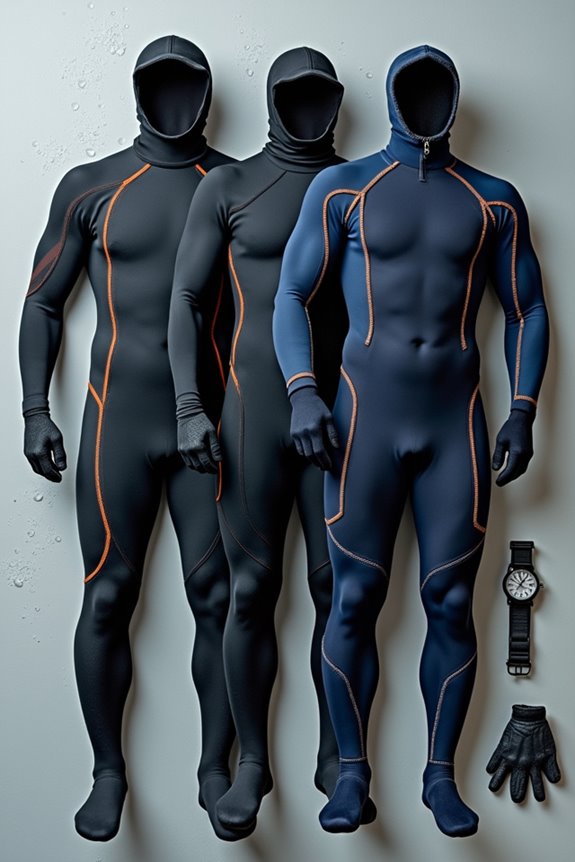
Since cold water boating demands more than just a sturdy wetsuit, we’ve got to think about the right accessories that keep us warm, safe, and comfortable out there. Thermal protection is key—think thermal base layers, insulating fleeces, and waterproof outerwear that block that chilly wind. Don’t forget gloves and hats; losing heat through your hands or head? Not fun.
On the safety equipment front, life jackets are non-negotiable for obvious reasons. We also recommend packing first aid kits tailored for cold injuries, emergency blankets to fight hypothermia, and hand warmers for those extra frosty days. And hey, keep a whistle handy—it’s great for signaling if things go sideways.
Together, these gear choices help us stay cozy and secure while enjoying those brisk boating adventures. Who said cold can’t be fun?
Factors Influencing Wetsuit Choice for Boaters
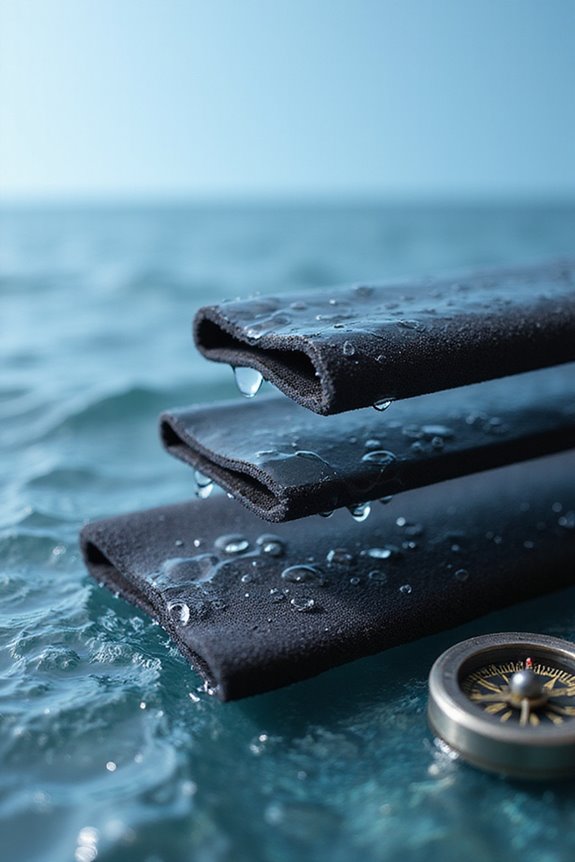
Even if you’ve got the perfect wetsuit style picked out, figuring out the right thickness can feel like a bit of a puzzle. We all have different personal preferences when it comes to warmth and mobility, so it’s important to take into account what suits you best. For example, if your boating trips last just an hour or two, a thinner wetsuit might do the trick—especially if you’re moving around a lot and generating body heat. But for longer outings in chillier water, thicker neoprene with accessories offers better insulation. Don’t forget, things like wind chill and water temps also sneak in, nudging us toward a thicker suit than we might expect. So, by balancing activity duration, environmental factors, and personal comfort, we can all find that happy medium on the water.
Caring for and Maintaining Your Wetsuit
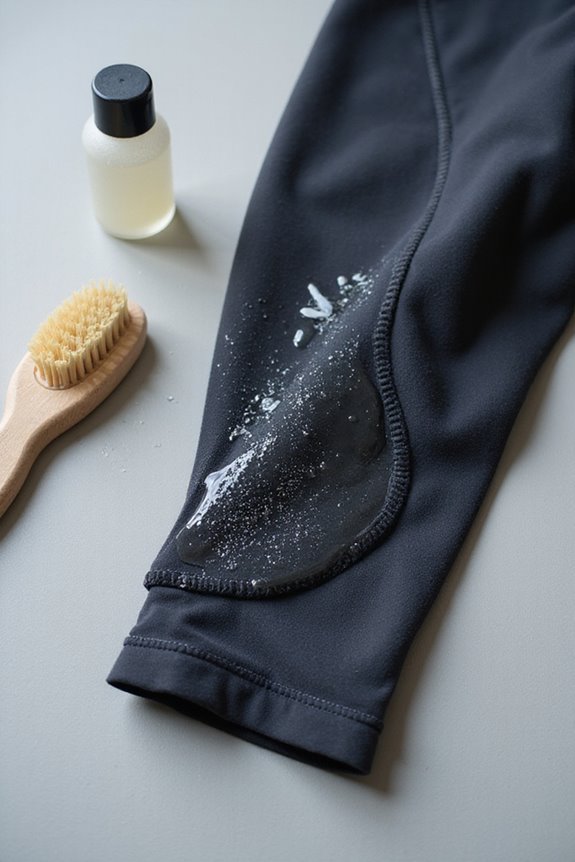
While it might seem tempting to just toss your wetsuit in the corner after a fun day on the water, taking proper care of it can actually make a huge difference in how long it lasts—and how comfy it feels every time you suit up. For effective wetsuit cleaning and neoprene care, always rinse your suit with cold fresh water immediately after use, inside and out, to wash away salt, sand, and chlorine. Skip hot water—that’s a quick way to damage neoprene flexibility. When it’s time for deeper cleaning, soak it with mild soap or neoprene shampoo every couple of months and gently scrub any smelly spots. Dry your suit in the shade on a wide hanger, avoid heat, and store it rolled or folded. Treating your wetsuit right keeps it happy, and you, warmer!
Frequently Asked Questions
Can I Wear a Wetsuit for Other Water Sports Besides Boating?
It’s funny how the same wetsuit that boosts our surfing benefits often enhances diving safety too. We can share gear across sports, creating a community that values both warmth and flexibility in every aquatic adventure we embrace together.
How Does Wetsuit Thickness Affect Paddling or Rowing Comfort?
It is understood wetsuit thickness affects paddling flexibility and wetsuit buoyancy, impacting comfort. Thicker suits boost buoyancy but reduce mobility, while thinner ones enhance stroke ease. Together, let’s find the perfect balance for smooth paddling adventures.
Are There Eco-Friendly Wetsuit Material Options for Boating?
We’re excited to share that sustainable materials like Yulex and Greenprene offer eco-friendly wetsuit options, markedly reducing environmental impact. Together, we support better water adventures while protecting our planet with cutting-edge, responsible gear choices.
What Is the Average Lifespan of a Wetsuit Used in Boating?
We’ve found that the average wetsuit lifespan in boating is 2 to 3 years, but with diligent wetsuit maintenance tips and exploring wetsuit repair options together, we can definitely extend that and keep our gear ready for adventures!
Can Layering Thin Wetsuits Replace One Thick Wetsuit for Warmth?
We could swear layering techniques turn us into superhumans battling Arctic chills! Yet, when it comes to thermal efficiency, one thick wetsuit usually wins—keeping us cozy without the bulk of multiple layers slowing us down.

